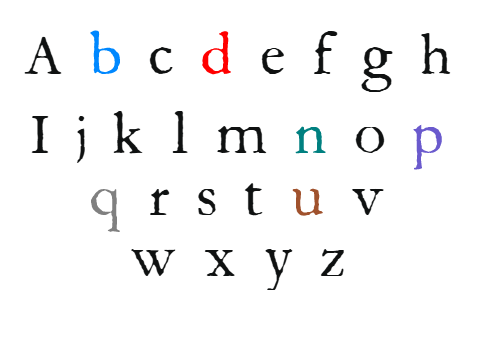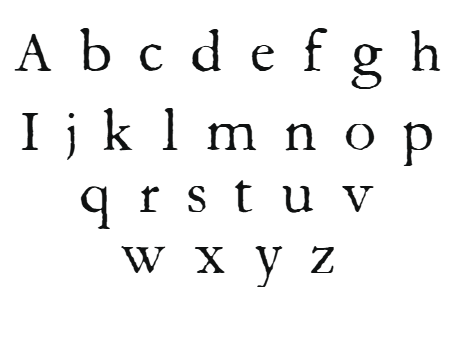Your cart is currently empty!
Dyslexia Aquatic Color Coded Font
the Dyslexia Aquatic Color Coded Font is an innovative solution crafted to enhance reading ease and speed for individuals with dyslexia.
Description
Dyslexia Aquatic Color Coded Font
(with Black Version and Color Coded Version by Improve Dyslexia)
Designed by the renowned typeface designer Simon Blake, the Dyslexia Aquatic Color Coded Font is an innovative solution crafted to enhance reading ease and speed for individuals with dyslexia and support actors learning scripts. This font combines a bold and clear Black Version with an engaging Color Coded Version, offering comprehensive tools to improve readability and comprehension through strategic visual cues.
The Importance of Color Coding in Dyslexia Solutions
Color coding in fonts provides a powerful multisensory approach to reading. For individuals with dyslexia, traditional fonts can often cause challenges such as letter reversals, visual crowding, and increased cognitive load, which slow down reading speed and dampen comprehension. Simon Blake’s Dyslexia Aquatic Font uses color to break through these barriers, leveraging these hues to distinctly differentiate letter groups and streamline decoding.
Features of Dyslexia Aquatic Font
- Dual Versions for Versatility
- The Black Version features an elegant, high-contrast design, ideal for print and digital platforms. Its robust and friendly letterforms ensure clarity, making it easy for users to navigate text without unnecessary distraction.
- The Color Coded Version employs a vibrant palette to assign unique colors to vowels, consonants, and commonly confused letter pairs such as “b” and “d” or “u” and “n.” This approach provides immediate visual differentiation, essential for rapidly recognizing letters and words.
- Clarity and Simplicity
- Distinctive Letterforms: The font design emphasizes clear, distinguishable shapes, with well-spaced, rounded characters preventing visual confusion and fatigue.
- Consistent Baselines and Open Counters: These design aspects guide the reader’s eye smoothly across lines, ensuring each letter is easily recognizable and words are quickly processed.
- Color Coding for Enhanced Reading
- Quick Recognition: The color coding acts as visual guides, enabling users to differentiate similar letters instantly, thus reducing common errors and increasing reading speed.
- Memory Reinforcement: Associating colors with letter sounds and shapes reinforces memory, aiding in faster recall and improving overall comprehension.
- Smooth Flow: By reducing visual congestion, color differentiation allows readers to maintain a consistent reading flow with less cognitive effort.
Specialized Application for Actors and Script Reading
Acting often involves extensive script reading, requiring quick memorization and accurate line delivery. For dyslexic actors, this task becomes even more daunting with typical scripts that lack supportive design features. The Dyslexia Aquatic Font transforms this challenge into a more manageable process through its color-coded support system:
- Faster Line Memorization: By associating specific colors with characters or cues, actors can learn lines more swiftly, minimizing rehearsal time and reducing stress under performance conditions.
- Enhanced Focus: The font’s visual clarity helps actors focus on expression and delivery, rather than getting stuck deciphering text, improving their engagement and authenticity on stage.
- Better Confidence: Clear, color-coded scripts decrease anxiety and errors, leading to more assured performances and a stronger command over material.
Practical Benefits and Applications
Educational Tools: Teachers can adopt this font in classroom materials, exercises, and evaluations, enhancing learning environments for dyslexic students and fostering inclusive education.
Digital Content and Media: Ideal for websites, apps, and digital publications, the font enhances user experience, making online reading more accessible and enjoyable.
Community and Public Use: The Black Version supports public signage and printed communication, ensuring essential information is accessible to everyone, including those with reading difficulties.
Script and Performance Materials: Acting schools and theatres can incorporate the font into script materials, enabling dyslexic actors to excel without additional hurdles.
Embracing a Future of Inclusivity
Simon Blake’s Dyslexia Aquatic Color Coded Font embodies the future of inclusive design by seamlessly integrating aesthetically pleasing typography with practical reading aids. By utilizing color strategically, the font not only supports individuals with dyslexia but also demonstrates how thoughtful design can enhance learning and performance across various domains.
The Aquatic Advantage:
This font stands out with its unique ability to make reading engaging and less strenuous. It empowers readers, boosts confidence, and opens up possibilities for dyslexic individuals, nurturing their potential and supporting their creative expression in the arts and beyond.
Using Color-Coded Fonts for Actors and the Broader Impact on Reading Speed
Actors often face the challenge of quickly learning, memorizing, and delivering lines from dense scripts, sometimes under intense time constraints. For actors with dyslexia or reading difficulties, parsing lengthy scripts is an even greater challenge, often leading to slower rehearsal times and increased stress. Implementing color-coded fonts in scripts offers a powerful solution that can revolutionize how actors engage with their material.
Color coding acts as a visual shortcut, helping actors distinguish between characters, cues, and key phrases at a glance. For example, assigning specific colors to each character’s dialogue or tone cues enables actors to identify their lines more rapidly, reducing the mental effort required to decode dense text. This multisensory approach accelerates line learning, making rehearsals more efficient and performances more confident. The visual cues support memory by tying colors to emotional intonations or character traits, deepening actor engagement and delivery.
Beyond acting, the broader use of color fonts to enhance reading speed benefits everyone. When reading text—whether a script, a book, or digital content—color cues help the reader recognize patterns more automatically. They reduce the effort involved in decoding words, especially unfamiliar or complex vocabulary. This not only results in faster reading but also decreases fatigue and increases motivation. The brain processes colorful information more efficiently, making reading a more enjoyable experience and encouraging longer reading durations.
In educational settings or everyday reading, the use of color fonts fosters confidence and independence. Readers begin to associate colors with specific sounds or word groups, which accelerates recognition and comprehension. Over time, this multisensory reinforcement helps develop automaticity—the ‘instant’ recognition of words—allowing users to read more fluently and accurately. This heightened speed and ease inspire users of all ages to read more often and for longer periods, cultivating a lifelong love for reading.
By integrating color-coded fonts into tools for acting, learning, and everyday reading, we foster an inclusive environment that supports diverse processing styles. As the benefits become clear—speeding up line memorization, reducing errors, and making reading less stressful—more people are motivated to adopt this innovative approach. Ultimately, color fonts do more than support those with dyslexia; they push the entire population toward quicker, more confident reading, demonstrating that thoughtful design can truly transform how we engage with written language.
Conclusion
The Dyslexia Aquatic Color Coded Font by Improve Dyslexia, led by Simon Blake’s design expertise, offers a pioneering solution to reading difficulties, integrating sophisticated aesthetics with cutting-edge functionality. Its application ranges broadly—from the classroom to the theatre—enabling smoother reading experiences and cultivating talent through innovative design.
With the integration of the Dyslexia Aquatic Font, educators, organizations, and performers are poised to create a future where reading is more accessible, inclusive, and empowering, ensuring everyone can communicate and express themselves fluently, no matter their challenges.


Reviews
There are no reviews yet.